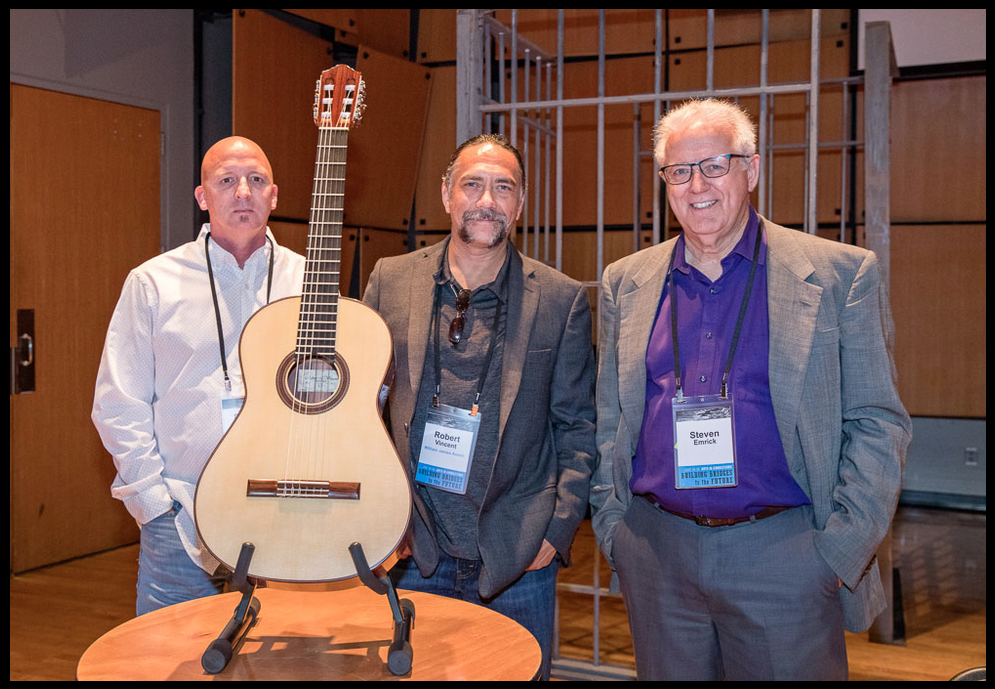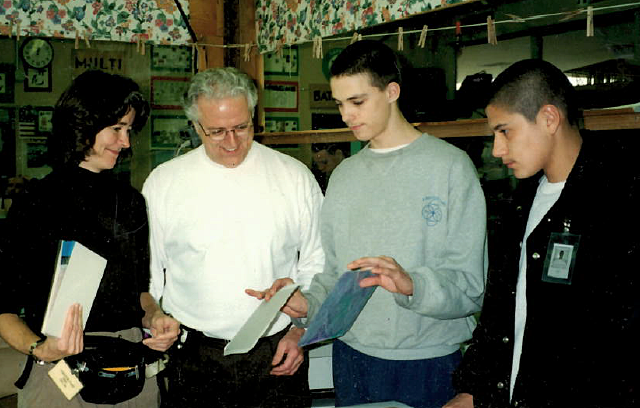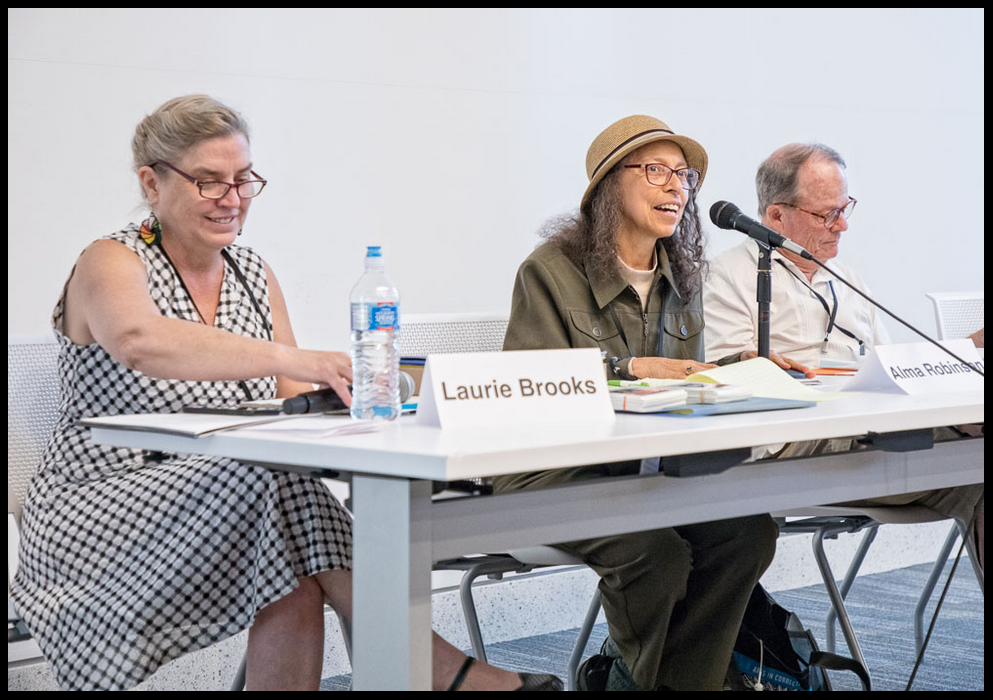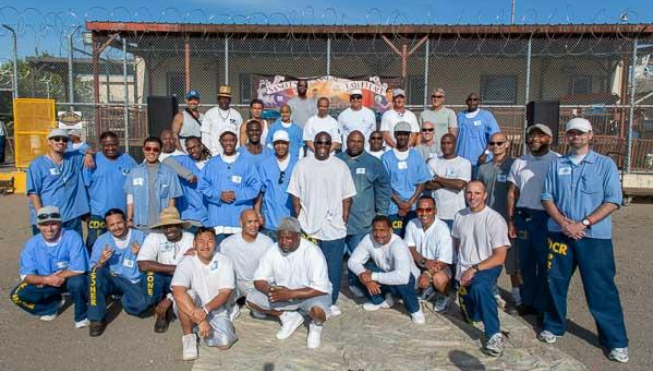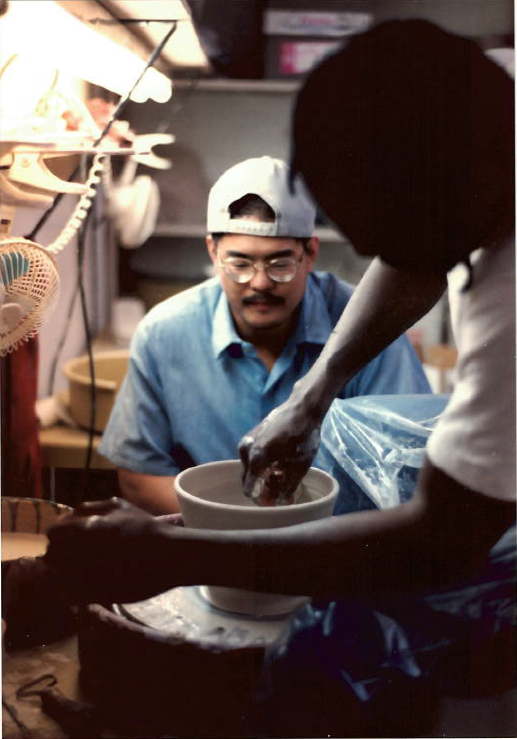Steve Emrick never sought to be a leader—but leadership found him. This is the fifth in a six-part series of posts based on an interview I conducted with Steve about his three decades running arts programs in California’s prison system. In Section 5, Steve described how he kept working to reinstate art programs for prisoners even while he was working as assistant canteen manager at San Quentin.
Sarah: So how did it come about that arts funding was finally reinstated?
Steve: Laurie and I started getting access to politicians—Senator Leno and others. But Leno told us, Look, there’s no one with the political will to support arts in prisons right now—how can I ask for money for prison art programs when we’re cutting Medicare and Medicaid to people who desperately need it? But Laurie hung in there. A couple important developments really helped our cause. For one thing, we got California Lawyers for the Arts on board. Their political clout and connections gave us more access to the legislature. Then when Jerry Brown was reelected governor in 2007, that also created a shift, an opportunity. And keep in mind the economy was improving. Long story short, in 2014, the California Arts in Corrections funding was finally reinstated—at six million dollars a year. The highest it had ever been before that was three million. But keep in mind, six million is still only half of one percent of the Department of Corrections budget.
Sarah: That raises a question that was bound to come up in this conversation: What do you say to people who see you as greasing the wheels of a fundamentally unjust system?
Steve: Progressives have realized over time that if you keep standing outside the system throwing stones, you may not get as big a change as if you go inside. By going into the prisons, I’m changing culture. Laurie and I, by working hard for a decade, were able to bring back funding for Arts in Corrections. If we hadn’t somehow kept the San Quentin program going, as a demonstration program, with guys who could talk about how much it had helped turn their lives around, I don’t know if that would have happened. Instead, at this point the Department of Corrections and the public at large have made a 180-degree shift in their thinking. Before, the thinking was: Lock away the troublemakers. But now people realize, there’s no room in the prisons for all these people and it’s not good for the economy anyway. That’s what working within the system can do.
By working inside, I influence the prison staff. I’m able to help them realize that they have an opportunity to change inmates by working with them. And in my position now as the coordinator of all the volunteer programs, I’m even able to work with Laurie to help influence legislators and politicians.
This same dialogue goes on with the public school system. It’s easy to criticize the schools from the outside. But my partner Dana’s a poet who teaches in the school system and she gets so many comments from parents of students she teaches: “My son would never write and now he can’t wait to get to your class and he writes poetry and he’s completely engaged in school.” These things are small but they’re also huge. By working within the system, Dana has helped those parents learn to appreciate the arts. And she’s nudged those kids toward a different approach to academia and even to life. Administrators take note of things like that. That has more impact than if Dana were just to say, “The system sucks and I’m not going to be part of it.”
Sarah: I’m also curious how you answer the opposite challenge: that prisoners don’t deserve fun, meaningful, rewarding activities like art classes.
Steve: Yes, there are people who say, My kid doesn’t get art at her school but you’re giving these prisoners art classes. My response is: Everyone everywhere deserves to make art. And these guys’ experience with art is helping them develop into better citizens. The classes help them develop communication skills, and to create good art they have to get in touch with their humanity. They come out safer for your community and for themselves. Their recidivism rate is lower. So art in the prisons saves money for you, the taxpayer.
Sarah: I want to loop back and ask about your transition from assistant canteen manager into your current position as director of all of San Quentin’s volunteer programs. That’s a giant leap! How did that happen and when?
Steve: While I was the assistant canteen manager I returned to school to get a high school teaching certification because I knew I needed a more stimulating job. In 2012, right after I completed the coursework, the person in the position I have now, Laura Bowman, decided to move out of state. She approached me and urged me to apply for that job. She then approached the warden and recommended me for it. Because of my years of working with volunteers at San Quentin, I was given the position. So ironically, I wouldn’t have needed to do all that coursework.
Next: Mayberry with an Edge
-
August 2021
- Aug 31, 2021 The Heart Is the Major Target—Part 9: The Teacher Role Isn't My Essence Aug 31, 2021
-
June 2021
- Jun 13, 2021 The Heart Is the Major Target—Part 8: Machines Spilling Out Teachers Jun 13, 2021
-
April 2021
- Apr 14, 2021 The Heart Is the Major Target—Part 7: A Waterfall of Inspiration Apr 14, 2021
-
February 2021
- Feb 14, 2021 The Heart Is the Major Target—Part 6: Grab the Right Computer File Feb 14, 2021
-
December 2020
- Dec 26, 2020 The Heart Is the Major Target—Part 5: Yoga Is My Second Child Dec 26, 2020
-
November 2020
- Nov 5, 2020 The Heart Is the Major Target—Part 4: Wow, This Is Me Nov 5, 2020
-
October 2020
- Oct 4, 2020 The Heart Is the Major Target—Part 3: In Exile in My Own Country Oct 4, 2020
-
August 2020
- Aug 23, 2020 The Heart Is the Major Target—Part 2: Openness to the Unseen Aug 23, 2020
- Aug 2, 2020 The Heart Is the Major Target—Part 1: Let's Move Around; We'll Feel Better Aug 2, 2020
-
July 2020
- Jul 25, 2020 Educator Wellness Series Conclusion: Moving Forward with Wellness Jul 25, 2020
- Jul 6, 2020 Educator Wellness Practice #10: Inhabiting the Dignified Stance of "Adequate" Jul 6, 2020
-
June 2020
- Jun 17, 2020 Educator Wellness Practice #9: Jun 17, 2020
- Jun 3, 2020 Educator Wellness Practice #8: Reducing Stress Through Body Scanning Jun 3, 2020
-
May 2020
- May 21, 2020 Facebook Live Event: A Conversation About the Impact of Saying Goodbye to Students May 21, 2020
- May 13, 2020 Educator Wellness Practice #7: Setting Intention and Letting Go of Results May 13, 2020
- May 6, 2020 Educator Wellness Practice #6: Practicing Goodwill as Self-Care May 6, 2020
-
April 2020
- Apr 29, 2020 Educator Wellness Practice #5: Dealing with Constant Change Apr 29, 2020
- Apr 22, 2020 Educator Wellness Practice #4: Listening to Silence Apr 22, 2020
- Apr 21, 2020 Facebook Live Event: A Conversation About the Importance of Self-Care Apr 21, 2020
- Apr 15, 2020 Educator Wellness Practice #3: Apr 15, 2020
- Apr 8, 2020 Educator Wellness Practice #2: Engaging Wisely with News and Media Apr 8, 2020
- Apr 1, 2020 Educator Wellness Practice #1: Breathe ... Keep Breathing Apr 1, 2020
-
March 2020
- Mar 25, 2020 Educator Wellness Series for Collaborative Classroom Mar 25, 2020
-
May 2019
- May 19, 2019 Managing to Build Bridges - Part 8: Do We Want to Be Right in a Dictionary Sense? May 19, 2019
-
April 2019
- Apr 27, 2019 Managing to Build Bridges - Part 7: You Just Need to Find a Good Husband Apr 27, 2019
- Apr 6, 2019 Managing to Build Bridges - Part 6: Human Remains and Cultural Artifacts Apr 6, 2019
-
March 2019
- Mar 17, 2019 Managing to Build Bridges - Part 5: Poetry Has No Rules Mar 17, 2019
- Mar 3, 2019 Managing to Build Bridges - Part 4: Dessert Goes to a Different Stomach Mar 3, 2019
-
January 2019
- Jan 13, 2019 Managing to Build Bridges - Part 3: I Felt Pretty Stupid Jan 13, 2019
-
December 2018
- Dec 9, 2018 Managing to Build Bridges - Part 2: Such a Bad Kid Dec 9, 2018
-
November 2018
- Nov 23, 2018 Managing to Build Bridges - Part 1: The Pressure to Be a Certain Type of Girl Nov 23, 2018
-
October 2018
- Oct 23, 2018 Leadership Without Ego - Part 6: Mayberry with an Edge Oct 23, 2018
- Oct 1, 2018 Leadership Without Ego - Part 5: Everyone Everywhere Deserves to Make Art Oct 1, 2018
-
September 2018
- Sep 10, 2018 Leadership Without Ego - Part 4: I'm About Ready to Swear Sep 10, 2018
-
August 2018
- Aug 19, 2018 Leadership Without Ego - Part 3: The Dalai Lama Breaks All the Rules Aug 19, 2018
-
July 2018
- Jul 29, 2018 Leadership Without Ego - Part 2: The Kids Melted Under That Praise Jul 29, 2018
- Jul 10, 2018 Leadership Without Ego - Part 1: The Workshop Was Neutral Territory Jul 10, 2018
-
May 2018
- May 26, 2018 The Alchemy of Service - Part 5: Watch Out, Someone's Behind You May 26, 2018
- May 6, 2018 The Alchemy of Service - Part 4: Fireworks and Tears May 6, 2018
- May 5, 2018 The Alchemy of Service - Part 3: Joann Wong! You Are Chinese! May 5, 2018
-
April 2018
- Apr 6, 2018 The Alchemy of Service - Part 2: Mom, It's Only a Nickel Apr 6, 2018
-
March 2018
- Mar 19, 2018 The Alchemy of Service - Part 1: Mouse Soup Mar 19, 2018
-
February 2018
- Feb 18, 2018 Back to the Garden - Part 4: Mountain Lion Footprints on the Deck Feb 18, 2018
- Feb 3, 2018 Back to the Garden - Part 3: "You're a Good Egg—Happy Easter" Feb 3, 2018
-
January 2018
- Jan 15, 2018 Back to the Garden - Part 2: "A Pretty Big Failure" Jan 15, 2018
- Jan 1, 2018 Back to the Garden - Part 1: "Aesthetic Shock" Jan 1, 2018
-
August 2017
- Aug 15, 2017 Goodbye Self-esteem, Hello Self-compassion – Part 3: Real Love Aug 15, 2017
-
July 2017
- Jul 31, 2017 Goodbye Self-esteem, Hello Self-compassion – Part 2: Mirror, Mirror Jul 31, 2017
- Jul 17, 2017 Goodbye Self-esteem, Hello Self-compassion – Part 1: Bashing Vasco Jul 17, 2017
-
May 2017
- May 28, 2017 This Thing I Found: Teens Teach Us How to See Freshly May 28, 2017
-
March 2017
- Mar 20, 2017 Dream On - Part 6: Dream Analysis Example Mar 20, 2017
- Mar 7, 2017 Dream On - Part 5: A Dream Analysis Technique (cont.) Mar 7, 2017
-
February 2017
- Feb 20, 2017 Dream On - Part 4: A Dream Analysis Technique Feb 20, 2017
-
January 2017
- Jan 22, 2017 Dream On - Part 3: Recording Dreams Jan 22, 2017
- Jan 15, 2017 Dream On - Part 2: Dream Recall Jan 15, 2017
-
December 2016
- Dec 30, 2016 Dream On – Part 1 Dec 30, 2016
- Dec 12, 2016 Enjoying the Ride of Serendipity Dec 12, 2016
- Dec 6, 2016 Agnes Martin: A Singular Career Dec 6, 2016




